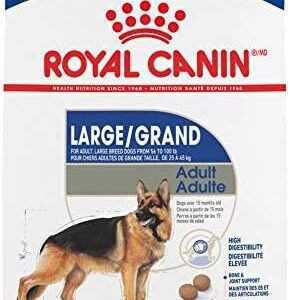Just like humans, dogs can suffer from allergies and related symptoms. Claritin (loratadine) is an antihistamine commonly prescribed by veterinarians to help manage allergic reactions in dogs. This comprehensive guide will help pet owners understand the proper use and dosage of Claritin for their canine companions.
Dog Information
Important Disclaimer
Before administering any medication to your dog, including Claritin, always consult with your veterinarian. While Claritin is generally considered safe for dogs when properly dosed, individual circumstances may make it inappropriate for some pets. Your veterinarian can provide personalized advice based on your dog’s specific health conditions, age, and medical history.
Understanding Claritin for Dogs
Claritin works by blocking histamine receptors, which helps reduce allergy symptoms such as:
- Itching and scratching
- Hives
- Runny nose
- Watery eyes
- Sneezing
- Skin inflammation
Correct Formulation
When selecting Claritin for your dog, it’s crucial to choose the right formulation. Use only regular Claritin (loratadine) tablets or pills. Avoid:
- Claritin-D, which contains pseudoephedrine (dangerous for dogs)
- Liquid formulations that may contain xylitol (toxic to dogs)
- Products with added decongestants or other ingredients
- Time-release formulations
Proper Dosage Guidelines
The standard dosage of Claritin for dogs is approximately 0.2 mg per pound of body weight, given once daily. However, this is a general guideline, and your veterinarian may adjust the dose based on your dog’s specific needs.
Common dosage recommendations by weight:
- Small dogs (under 14 lbs): 5 mg daily
- Medium dogs (14-34 lbs): 10 mg daily
- Large dogs (35+ lbs): 10-20 mg daily, as prescribed by your vet
Timing and Administration
For optimal effectiveness, consider these administration guidelines:
- Give Claritin at the same time each day
- Can be given with or without food
- If using tablets, they can be hidden in treats or pill pockets
- Maintain a consistent schedule for best results
- Keep track of when doses are given
Monitoring Your Dog
After starting Claritin, carefully observe your dog for both positive effects and potential side effects. Common side effects may include:
- Drowsiness or lethargy
- Dry mouth
- Urinary retention
- Gastrointestinal upset
- Changes in appetite
Contact your veterinarian immediately if you notice any concerning symptoms or if your dog’s condition worsens.
When to Use Claritin
Claritin may be prescribed for various conditions, including:
- Seasonal allergies
- Environmental allergies
- Skin allergies
- Vaccine reactions
- Insect bites or stings
- Mild allergic reactions
However, Claritin is not appropriate for severe allergic reactions or anaphylaxis, which require immediate emergency veterinary care.
Special Considerations and Contraindications
Certain conditions may affect whether Claritin is appropriate for your dog:
Medical Conditions
- Liver disease
- Kidney disease
- Heart conditions
- Pregnancy or nursing
- History of seizures
Drug Interactions
Claritin may interact with other medications, including:
- Other antihistamines
- Sedatives
- Anti-anxiety medications
- Some antibiotics
- Heart medications
Always provide your veterinarian with a complete list of medications and supplements your dog is taking.
Alternative Options
If Claritin isn’t suitable for your dog, several alternatives may be considered:
Other Antihistamines
- Benadryl (diphenhydramine)
- Zyrtec (cetirizine)
- Hydroxyzine
Natural Remedies
- Omega-3 fatty acid supplements
- Coconut oil
- Quercetin supplements
- Local honey (for environmental allergies)
Environmental Management
- Regular bathing with hypoallergenic shampoo
- HEPA air filters
- Frequent house cleaning
- Limited outdoor time during high pollen periods
Long-term Management
For chronic allergy symptoms, consider these long-term management strategies:
- Keep a symptom diary to track effectiveness
- Schedule regular veterinary check-ups
- Identify and avoid allergy triggers when possible
- Consider allergy testing for severe cases
- Implement environmental controls
- Maintain a consistent treatment schedule
When to Seek Emergency Care
While Claritin can help with mild to moderate allergic reactions, some situations require immediate veterinary attention:
- Severe swelling, especially around the face
- Difficulty breathing
- Collapse or severe weakness
- Pale or blue gums
- Severe vomiting or diarrhea
- Signs of anaphylaxis
Prevention and Maintenance
To minimize the need for antihistamines:
- Maintain regular flea prevention
- Keep your home clean and dust-free
- Wash bedding regularly
- Use air purifiers
- Keep a log of potential triggers
- Consider dietary modifications if food allergies are suspected
Conclusion
Claritin can be an effective tool for managing allergies in dogs when used appropriately and under veterinary guidance. Success depends on proper dosing, careful monitoring, and understanding when alternative treatments may be necessary. Always prioritize your dog’s safety by consulting with your veterinarian before starting any new medication regimen.
Remember that each dog is unique, and what works for one may not work for another. Pay attention to your dog’s response to treatment and maintain open communication with your veterinary care team to ensure the best possible outcomes in managing your pet’s allergies.
























